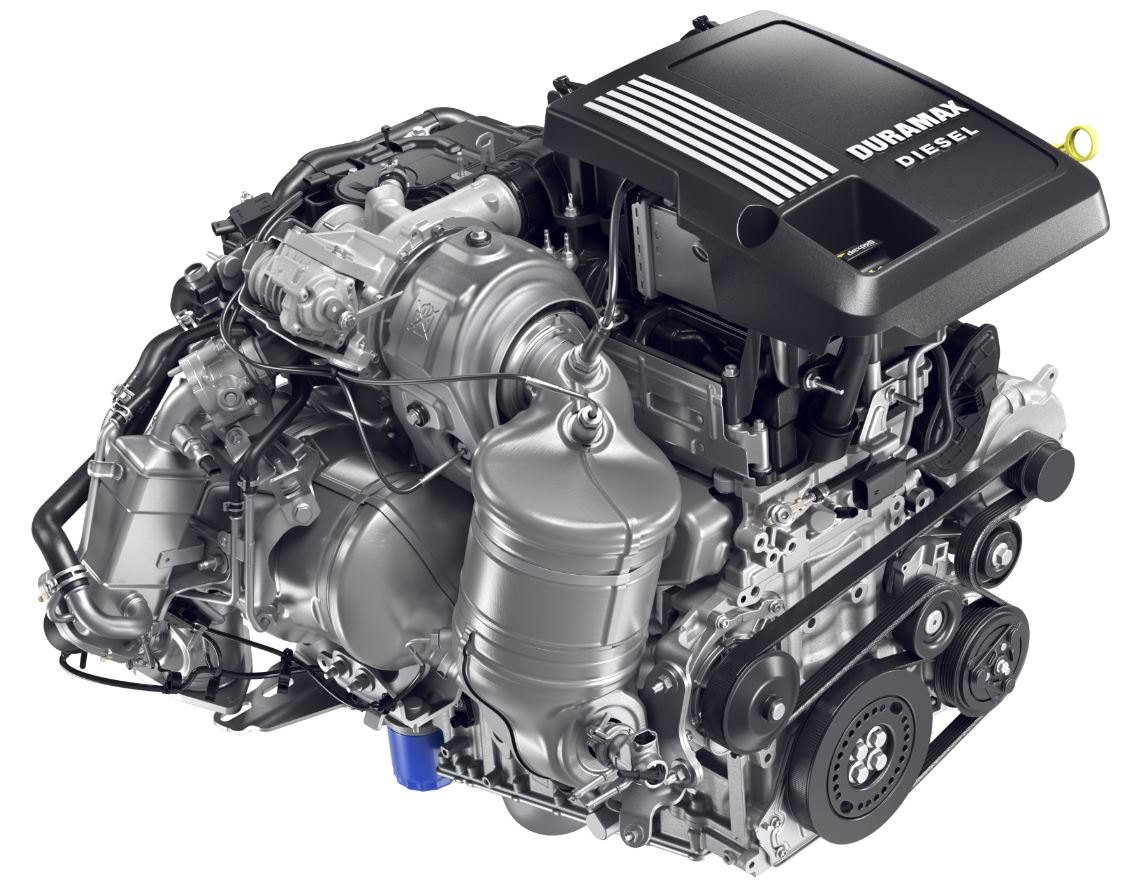5 Best Used Pickup Trucks to Buy (2024 Top Picks)
Deciding on the best used pickup truck to buy relies on a variety of factors, such as reliability, cost of ownership, and the truck’s features. Used trucks offer a chance to get the durability and utility pickup trucks are known for, without the steep price tag of a new model. By understanding the categories of trucks available—from light-duty to heavy-duty—you can pinpoint which type best used trucks most suits your needs.

Key Takeaways
Evaluating best used pickup trucks involves assessing reliability, ownership costs, and essential features.
Popular models like the Toyota Tundra, Ford F-Series and Chevrolet Silverado are known for their long-term durability.
A methodical approach to shopping for used trucks ensures a balance of performance and value.
Top 3 Picks For 2024 (and why)
Because I write and cover the automotive industry, I have the opportunity to drive, research and learn about so many vehicles. I always get asked what I think is the best used vehicle (car, truck, suv, etc.) to buy.
As a result, I put together this guide showing you how to go about picking the best used truck for your needs. However, not everyone wants to go through all of the details. As a result, here are the three used trucks I would buy today and why.
Winners
1. Toyota Tundra (2019 or Older)

For those seeking unwavering dependability, the Toyota Tundra stands out as a paragon of reliability.
Its robust build quality and endurance make it an ideal choice for individuals who demand a truck that can withstand the rigors of heavy workloads and challenging terrains.
The Tundra is particularly well-suited for contractors and outdoor enthusiasts who need a vehicle that’s as resilient as they are.
2. Toyota Tacoma (2019 or Older)

The Toyota Tacoma is renowned for its longevity and holds its value exceptionally well, making it a smart purchase for the financially savvy buyer.
Its compact size and off-road capabilities appeal to adventurers and city dwellers alike, offering versatility for weekend escapades or urban navigation.
3. Ford Trucks with the 5.0L Engine

Ford’s lineup of trucks equipped with the robust 5.0L engine is a testament to performance and strength.
These trucks are perfect for those who need a reliable workhorse for towing and hauling, such as small business owners or individuals in the trades.
The fusion of power and reliability ensures that these Ford trucks are up to the task, no matter how demanding.
Honorable Mentions
While the top three picks are outstanding, other noteworthy options include the Chevy Silverado and GMC Sierra for their comfortable ride, great looks (in my opinion) and strong performance.
The Ram 1500 is popular for its luxurious interior and smooth ride, the Chevy Colorado and Ford Ranger for their more manageable size and efficient fuel economy.
The Nissan Titan and Nissan Frontier work well for their ruggedness and affordability, and the Honda Ridgeline for its innovative features and car-like driving experience.
These trucks cater to a range of needs, from the daily commuter to the weekend warrior, ensuring there’s a reliable used pickup for every type of driver.

Ford 5.0L Engine Years, Models and Trims
If you consider the Ford, you want the 5.0L motor. Here is a bit more about when it was offered. I get this question a lot too, so wanted to make sure you had this info:
Ford has offered the 5.0L V8 engine in various models and trims of their trucks over the years, particularly in the F-150 lineup.
This engine is well-regarded for its balance of power and reliability. The 5.0L V8, also known as the “Coyote” engine, was introduced in the 2011 model year for the Ford F-150 and has been available in various trims since then.
Four Wheel Trends
For instance, the Ford F-150 has been available with the 5.0L V8 across several trims, including the XL, XLT, Lariat, King Ranch, Platinum, and sometimes even the Limited trim. The availability of this engine in specific trims may vary by model year, so it’s essential to check the specifications for the year and trim level you’re interested in.
If you’re looking for a used Ford truck with a 5.0L engine, focusing on the F-150 models from 2011 onwards would be advisable, as this is when the Coyote engine was introduced and consistently offered across multiple trims.
Always verify the engine options for the specific year and trim to ensure the presence of the 5.0L V8, as Ford’s offerings can change with each model year.
The rest of this article covers my recommendations on evaluating used trucks for your needs and also gives you some insight into the factors I used to determine my Top Picks.
Finding Your Perfect Used Truck
For those in the market for a used truck, it’s crucial to focus on models known for longevity and minimal maintenance. Trucks like the Ford F-Series, Chevrolet Silverado, and Ram Pickup are popular on the used market for these reasons.
Identifying the core features that are essential, such as towing capacity, 4×4 capability, and fuel economy, will guide you in making a choice that meets your practical requirements.
Navigating the used truck market also involves assessing ownership costs, including insurance, fuel, and common repairs.
With the right information and a clear understanding of what you’re looking for, securing a deal on a used truck can be a straightforward process.
By prioritizing the driving experience and essential features over advanced customizations, you can make an informed decision that combines performance with value.
Identifying the Best Used Pickup Trucks
When we consider purchasing a used pickup truck, it’s crucial to evaluate specific factors such as reliability scores, towing and payload capacities, as well as fuel economy and engine efficiency.
Reliability Scores and Reputation
We prioritize reliability scores because they indicate a vehicle’s long-term performance. Trucks like the Toyota Tacoma are known for logging 300,000 miles or more, showcasing exceptional durability. The Ford F-150 also stands out for its strong top reliability score, with high scores that reinforce its status as a best-selling truck.
Considering Towing and Payload Capacities

When it comes to towing and payload capacities, specific models excel. The used truck we select should align with our hauling needs. A reliable pickup truck isn’t just about enduring road conditions but also about handling the work we need it to do. Here’s a brief look at what we consider:
Towing Capacity: Essential for those who frequently transport heavy loads.
Payload Capacity: Important for carrying goods in the truck bed.
Fuel Economy and Engine Efficiency
Lastly, fuel economy and engine efficiency are vital factors for our wallet and the environment. Trucks have traditionally been fuel-consumers, but advancements have led to more efficient options. The inclusion of turbo-diesel engines, such as those available in the F-150, provide improved fuel economy without sacrificing power.
By focusing on these specific attributes, we can identify the best used pickup trucks that offer a balance of reliability, capability, and efficiency.
Key Features
In the search for the best used pickup truck, we must examine the engine performance, interior space, and technological features closely to ensure we make a well-informed decision.

Engine Options and Performance
When evaluating engine choices, we prioritize power and efficiency. Diesel engines offer robust towing capabilities, while V6 and V8 engines balance power and fuel economy.
Specifically, the Ford F-150 and the Chevrolet Silverado 1500 are known for their range of engine options, including EcoBoost and Duramax diesel options that provide both performance and reliability.
Cabin Configurations and Interior Space
The cabin layout is paramount for comfort and utility. Crew cab layouts are often favored for their spacious interior, providing ample room for passengers and cargo alike.
For instance, trucks like the Ram 1500 are acclaimed for offering luxurious interiors and ample legroom, even in the back seats, making long trips more enjoyable.

Technology and Accessibility
Modern pickups should have accessible technology for a more convenient driving experience. We look for features like a navigation system and easy access to infotainment controls. Here’s a simple breakdown:
Infotainment: Touchscreen with Apple CarPlay and Android Auto capability
Connectivity: Multiple USB ports and Bluetooth connectivity for hands-free operation
Safety: Rearview cameras and advanced driver aids
Owners of models such as the GMC Sierra 1500 highlight its user-friendly technology features that include both practical and advanced options for a safe and connected ride.
Popular Models on the Used Market
When searching for a used pickup truck, three models stand out on the market: the Ford F-Series, Chevrolet’s Silverado and Colorado, and Toyota’s Tacoma and Tundra. These trucks have proven their worth in durability and performance, making them top choices for buyers.
Ford F-Series

The Ford F-Series, including the popular F-150 and the robust Ford Super Duty line, are among the most sought-after used models.
The F-150 is known for its impressive towing capabilities and range of powertrain options. Our community appreciates the Super Duty trucks for their heavy-duty performance and versatility.
Chevrolet Silverado and Colorado

Both the Chevrolet Silverado and its smaller counterpart, the Colorado, offer reliability and power.
The Silverado’s variety caters to different needs, from the 1500 model favored for everyday use to the 2500 and 3500 variants for more demanding tasks. Buyers looking for a more compact option with robust features often turn to the used Colorado.
Toyota Tacoma and Tundra

Toyota’s reputation for long-lasting vehicles is reflected in the Tacoma and Tundra pickup trucks.
The Toyota Tacoma stands out for its off-road capabilities, while the Tundra is known for its V8 engine and towing capacity. Both models maintain value well, making them a solid investment in the used market.
Ford F-Series: F-150, Super Duty
Chevrolet: Silverado 1500, 2500, 3500, Colorado
Toyota: Tacoma, Tundra
Our recommendations cater to a wide range of needs, from daily driving to heavy hauling. Each of these models brings a unique set of features and capabilities to the table, ensuring that there’s a truck fit for everyone’s requirements.

Understanding Truck Categories
When we discuss used pickup trucks, it’s essential to recognize the differences between the various categories, as they’re designed to meet specific needs in terms of size, capability, and performance.
Light-Duty Versus Full-Size Pickup Trucks
Light-duty trucks are designed with everyday usability and comfort in mind. They are typically easier to drive in urban areas due to their more manageable size.
Full-size pickup trucks, on the other hand, offer more power and cargo space, making them suitable for more demanding tasks. Both light-duty and full-size trucks balance practicality and performance for individual uses.
Light-Duty Trucks: Ideal for daily driving and light hauling needs.
Full-size Pickup Trucks: Offer additional towing capacity and payload for more strenuous activities.
Heavy-Duty Trucks for Maximum Capability
For tasks that exceed the capabilities of full-size pickup trucks, heavy-duty trucks are the next step up.
These trucks are outfitted with robust engines and reinforced chassis to handle the heaviest loads and toughest jobs.
Buyers considering used heavy-duty trucks should pay close attention to engine performance and towing specs to meet their needs.
Engine Performance: Crucial for optimal towing and hauling.
Towing Specs: Determine the potential load a heavy-duty truck can manage.

The Reliability Factor
When considering a used pickup truck, reliability is a paramount factor. We focus on identifying reliable pickup trucks known for their dependability and point out common mechanical issues that could affect long-term satisfaction.
Most Reliable Pickup Truck Models
Toyota Tacoma: The first generation of Tacoma earns accolades for its robustness, with older models like the 2016 Toyota Tacoma retaining a perfect reliability score.
Chevrolet Silverado 1500: Particularly the 2009 model has been cited for its reliability, combining a comfortable ride with a capable powertrain.
Ford F-Series: A staple in the pickup truck market known for its strong performance and longevity.
Toyota Tacoma
Chevrolet Silverado 1500
Ford F-Series
These models stand out in our assessment for combining reliability with functionality.

Common Engine and Mechanical Issues
Transmission Problems: It’s common across various models and years. Be vigilant for shifting issues.
Engine Troubles: Especially in higher mileage vehicles; watch for abnormal noises or loss of power.
Electrical Issues: Can afflict a range of truck models, leading to inconsistent performance.
Transmission problems, engine troubles, and electrical issues are aspects we suggest monitoring carefully in any used pickup truck. Each has the potential to influence the reliable performance of the truck.
Our examination of the most reliable trucks focuses on those that withstand the test of time without succumbing to common engine issues, remaining a solid choice on the used market. Remember, a reliable engine is at the heart of every dependable pickup truck.
Evaluating Ownership Costs
When looking to buy a used pickup truck, it’s crucial to consider the long-term ownership costs, which include fuel efficiency and maintenance, especially for vehicles with high mileage.
Fuel Efficiency Versus Power
We see a trade-off between fuel efficiency and power in used pickup trucks. You may encounter poor fuel economy if you prioritize power, especially for towing or hauling.
On the other hand, trucks designed for better fuel efficiency may not deliver the same level of performance in heavy-duty tasks.
It’s wise to compare models and their expected miles per gallon (MPG) to gauge how fuel costs will affect your overall ownership experience.
Maintaining Older Trucks
Maintaining an older truck often means more frequent repairs and higher costs, especially when they have high mileage. Here’s a breakdown we’ve compiled to guide you:
Regular maintenance (oil changes, tire rotations, brake pads)
Anticipated repairs (transmission work, suspension systems)
Replacement parts costs (parts can vary in price, depending on make and model)
Investing in a used truck often means planning fast forward to anticipate future expenses. Maintenance records are also vital, as they give an indication of the truck’s history and what you might expect in terms of upkeep.
Finding Deals and Navigating the Used Market
When looking for the best used pickup truck, we must be strategic in finding deals and navigating the used market efficiently.
When to Consider Last-Year Models
Last-year models are often listed at reduced prices to clear out inventory, making them excellent opportunities for savings. Dealerships may offer these models with competitive financing options, making them a smart buy for those of us looking to maximize value.
Subscribing to Deal Alerts
By subscribing to deal alerts from reputable automotive websites, we can receive occasional communications about potential deals.
This ensures we don’t miss out on limited-time offers. Moreover, if the notifications become too frequent, we can easily unsubscribe anytime, allowing us to manage the information flow according to our preferences.
Key Steps in Navigating the Market:
Sign up for newsletters and deal alert emails from trusted automotive sources.
Regularly check these alerts and maintain a clipboard of potential options.
Read the fine print, as some deals may only be available for a short period, or under certain conditions.
Remember, these approaches help us stay informed without being overwhelmed by too much information.
Driving Experience and Performance
When selecting a used pickup truck, we consider both its ability to handle highway speeds and its off-roading capabilities as critical components of driving experience and performance.
Handling at Highway Speeds
We look for trucks that maintain stability and responsiveness at highway speeds. For example, the 2021 Ram 1500 is noted for its quality and reliability in this scenario.
It provides enough power for smooth acceleration and passing without undue stress on the engine. The steering should be precise, and the suspension should deliver comfort, especially when the truck is loaded.
Off-Roading Capabilities
Our interest in off-roading takes into account several key factors. The capacity of a truck to navigate rough terrain is often linked to features like 4WD, high ground clearance, and robust suspension.
Certain used trucks stand out in this respect, such as the Ford Raptor, with its superior off-road tuning, which includes heavy-duty shock absorbers and skid plates. Here’s a list of off-roading attributes we assess:
4WD System: Ensuring maximum traction on challenging surfaces.
Ground Clearance: High enough to prevent underbody damage.
Suspension: Designed for impact absorption on rough trails.
Power Distribution: Adequate torque delivery to each wheel.
Each feature significantly contributes to a truck’s ability to handle off-roading demands, clearly indicating its overall off-road performance.

Advanced Features and Customizations
When we consider the best used truck to buy, we focus on vehicles that offer a balance of advanced technology in infotainment and the ability to customize to our specific needs.
Modern Infotainment and Connectivity
Many leading used trucks come equipped with infotainment systems that seamlessly integrate with our smart devices, offering both entertainment and practical functionalities. A standout system often includes:
A touchscreen display: typically ranging from 7 to 12 inches.
Smartphone integration: through Apple CarPlay or Android Auto.
In-built navigation systems: offering real-time traffic updates.
Voice recognition: to perform tasks hands-free.

For instance, an updated interior with a state-of-the-art infotainment system not only enhances the driving experience but can also provide vital connectivity that keeps us informed while on the move.
Customizing Your Truck
Customization is vital to tailor a used truck to our personal and professional needs. Here’s how we can customize:
Opt for a four-wheel-drive (4WD) system for better off-road capability and traction in various weather conditions.
Update the interior features: like installing a leather-wrapped steering wheel or custom seat covers to add comfort and style.
Consider adding or upgrading the navigation system to make sure we’re always on the right path.
- Aftermarket parts like lift kits, new rims, bumpers, skid plates, exhausts kits, towing vs standard mirrors, tinted windows, replacement headlights and much more!

We ensure that the used truck we select can be customized both in its functionality, such as four-wheel drive systems, and in aesthetic preferences, for a balanced and personalized vehicle.
Conclusion: Making an Informed Decision
When selecting the best used pickup trucks to buy, our approach must be strategic. We assess reliability, performance, mileage, and available features. The goal is to find a vehicle that balances durability with value.
Truck Mileage and Lifespan:
Toyota Tacoma: Known for surpassing 300,000 miles
Ford F-150: Offers a range of powertrain options; renowned for reliability
Payload Capacities:
Brand Capacity Range (pounds) General 1,500 to 3,500 Ford F-150 Specific to model
We recommend reviewing expert ratings and reliability for used pickup trucks before purchasing. It’s advisable to inspect the vehicle’s history reports and consider longevity, as some trucks are known to offer robust service beyond the average lifespan.
In our quest for used pickup trucks, we prioritize models that demonstrate a proven track record of performance. We consider these trucks as investments; therefore, we focus on overall condition and total cost of ownership, including maintenance and parts availability.
Remember, a thorough test drive and vehicle inspection are essential. By adhering to these principles, we ensure that we choose a used pickup truck that is not only functional for our needs but also promises continued service and satisfaction.
Frequently Asked Questions
When searching for the best used pickup truck, we prioritize durability, affordability, and reliability. Let’s dig into some of your top questions.
Which used pickup trucks offer the best durability and longevity?
For optimal durability and longevity, we often recommend looking at models like the Toyota Tundra or Ford F-Series. These trucks have a reputation for outlasting others, especially when properly maintained.
What are the top picks for used trucks under $10,000?
Under $10,000, our picks best pickup trucks include the Chevrolet Silverado and Ford Ranger. These trucks provide a balance of usability and dependability without breaking the bank.
Considering reliability, which pre-owned trucks under $20,000 should I look at?
In the under $20,000 category, we suggest considering the Honda Ridgeline and Toyota Tacoma. They score high for reliability and have a strong resale value.
From the past decade, which trucks stand out for their reliability?
From the last decade, the standout trucks for reliability include:
2017 Honda Ridgeline
Toyota Tacoma
Ford F-150 These models are recognized for their consistent performance and fewer repair needs over time.
What should I consider when buying a truck from an older model year?
When considering older model trucks, we recommend checking the vehicle’s service history, understanding common issues with that specific model, and getting a professional inspection to assess the truck’s condition.
Are there small trucks available that are both reliable and priced under $5,000?
Finding small trucks under $5,000 that are also the most reliable pickup trucks can be a challenge. However, older models of the Ford Ranger and the Chevrolet S-10 may fit the bill, provided they’ve been well-maintained.
